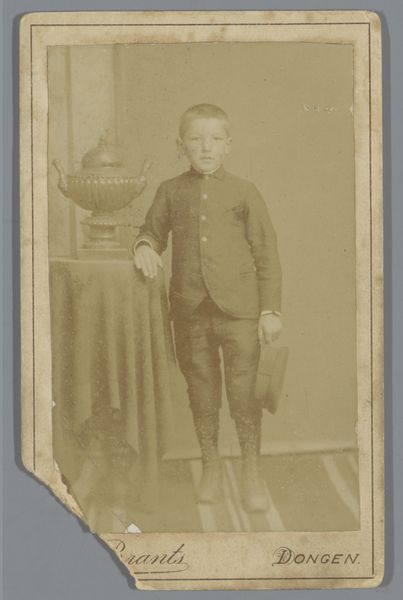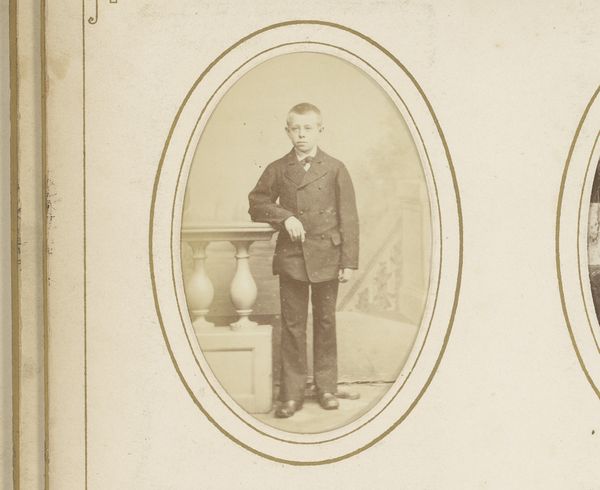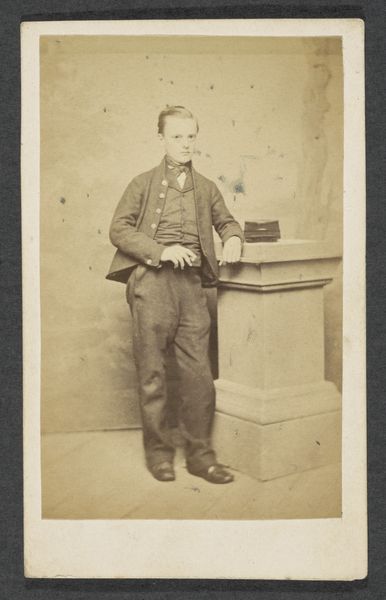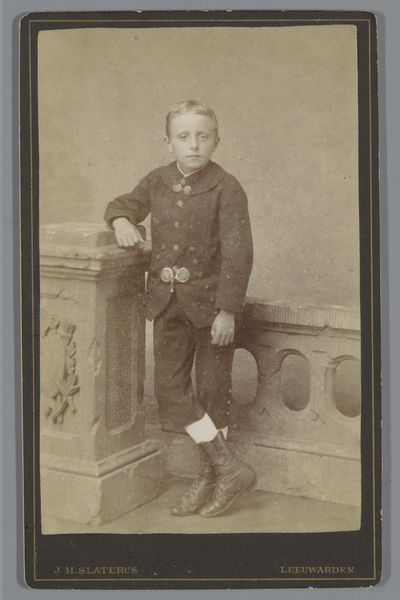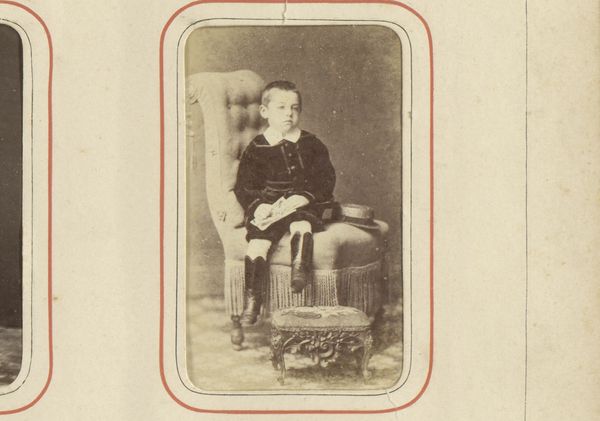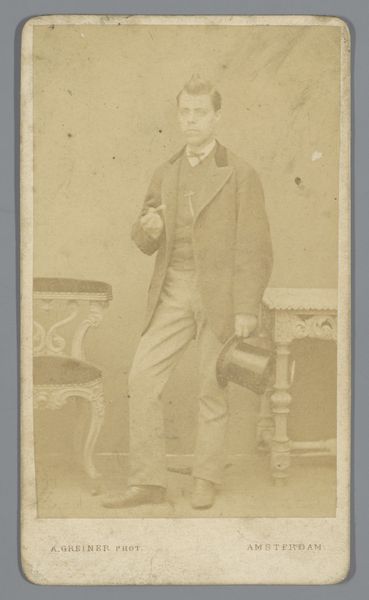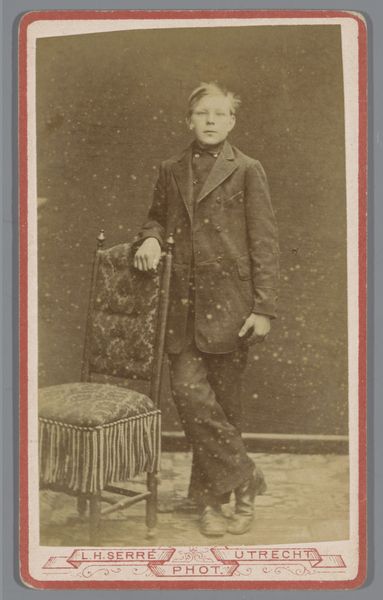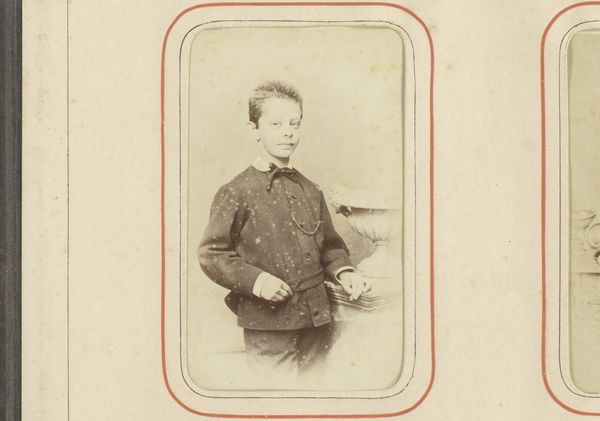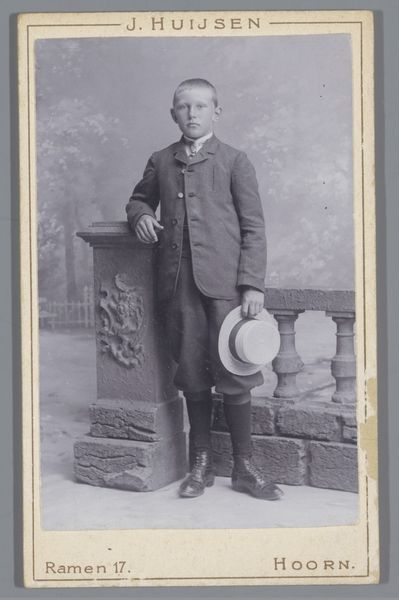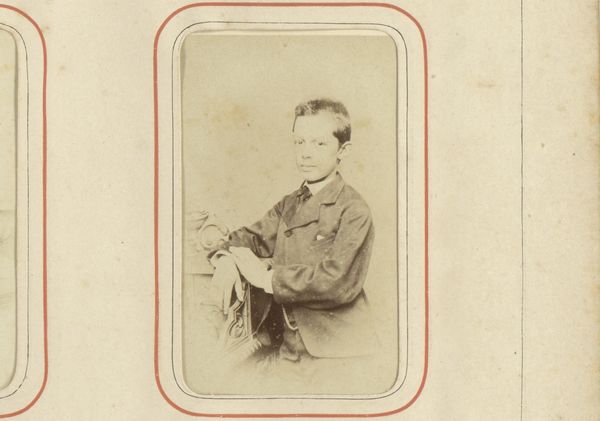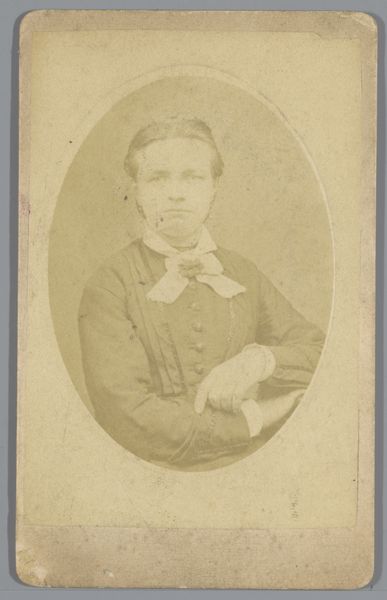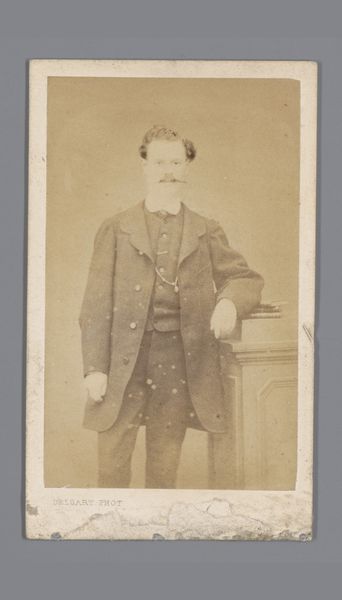
photography, gelatin-silver-print
#
portrait
#
photography
#
coloured pencil
#
gelatin-silver-print
Copyright: Rijks Museum: Open Domain
Curator: Welcome. Here we have a fascinating piece: an undated photograph by Franz Wilhelm Deutmann entitled "Portret van Johann Friedrich Scheltema", believed to be created sometime between 1860 and 1870, a gelatin-silver print from the Rijksmuseum collection. Editor: Wow, there's a melancholic stillness to it. It feels intensely personal, even through the sepia tones, like stepping into someone's memory. Curator: These portrait photographs were becoming increasingly popular during this period, coinciding with evolving social constructs of representation. Editor: Is it just me, or is there something almost performative about the formality? That elaborate chair, the somewhat rigid posture. The composition gives such theatrical vibes! Curator: Early photography like this did take cues from painting, where posture and setting were important for portraying status, character and taste. The act of posing for a portrait, however, was still relatively novel, influencing posture. Editor: Interesting! I still feel like the formality contrasts in an affecting way. In the child’s eyes there’s vulnerability; an unsettling mix. Do you know anything more about Johann Scheltema? Curator: Historical records tell us that he was a prominent figure in 19th-century Dutch society. It is in portraits such as these, we see individuals immortalized through photography, which would once only have been possible through painting, thereby democratising art and making art affordable to a far greater audience. Editor: He seems very self-conscious to have all that responsibility put on his young shoulders, this almost theatrical setting makes me ponder upon how photography has moulded and twisted perception since its inception. Curator: That's a very thoughtful interpretation! The photograph does make us consider photography's influence on societal narratives, doesn’t it? It would be an act that can immortalise reality as a means of controlling our very idea of reality. Editor: Absolutely. The photo does not exist by accident and nor does it merely show how it happened to be at that given time! Curator: Precisely. Thank you. I think this discussion provides new angles from which to consider this unique work.
Comments
No comments
Be the first to comment and join the conversation on the ultimate creative platform.
